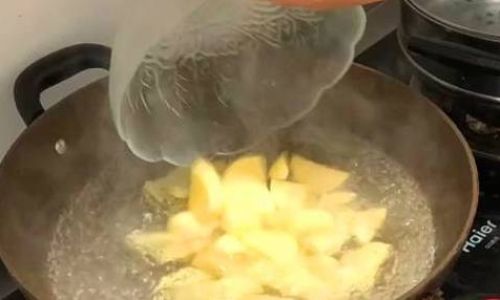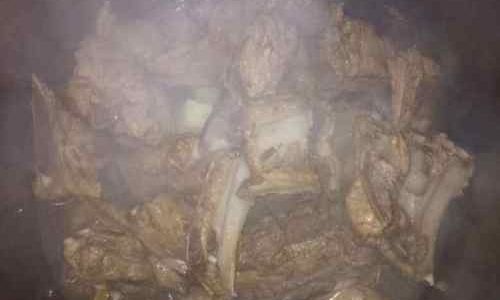Introduction
Fresh beef is a staple in many cuisines worldwide, renowned for its rich flavor, nutritional value, and versatility in cooking. However, maintaining its freshness, especially when stored at room temperature, presents unique challenges. While refrigeration and freezing are ideal for prolonging the shelf life of meat, there are situations where storing beef at room temperature becomes necessary—perhaps during a power outage, during transportation, or for immediate use in cooking preparations. This article delves into the practical aspects of preserving fresh beef at room temperature, highlighting effective strategies, potential risks, and the importance of understanding the limitations of such practices.
Understanding the Perils of Room Temperature Storage
Before exploring how to preserve fresh beef at room temperature, it’s crucial to understand the perils associated with this method. Bacteria, including those harmful to human health such as Salmonella, E. coli, and Staphylococcus aureus, thrive in warm environments. Fresh beef, being an organic material rich in nutrients, provides an ideal breeding ground for these microorganisms. As such, prolonged exposure to room temperature can lead to rapid bacterial growth, resulting in spoilage and potential food poisoning.

The danger zone for food safety is generally considered to be between 40°F (4.4°C) and 140°F (60°C). Temperatures within this range allow bacteria to multiply rapidly. Therefore, any attempt to preserve fresh beef at room temperature must prioritize minimizing the duration within this danger zone.
Immediate Use and Preparation Techniques
One of the safest ways to handle fresh beef at room temperature is to use it immediately after purchase. If you plan to cook the beef within a couple of hours, there’s minimal risk associated with keeping it at room temperature during this brief period. However, ensure that the beef is handled hygienically, kept away from potential contaminants, and stored in a clean, covered container or on a plate.
For immediate cooking, consider partial thawing or preparation steps that can be done at room temperature. For instance, trimming excess fat or seasoning the meat can be done safely as long as the overall time spent at room temperature is minimized.
Using Ice and Insulation
When storing fresh beef at room temperature is unavoidable, employing ice and insulation can significantly extend its freshness. Pack the beef in a cooler or insulated container lined with ice packs or frozen gel packs. The goal is to keep the internal temperature of the beef as low as possible without freezing it.
It’s important to note that the effectiveness of this method depends on the initial temperature of the beef, the amount of ice used, and the external ambient temperature. In hot climates or during prolonged periods, even ice-insulated storage may not adequately protect against bacterial growth. Therefore, monitor the condition of the ice packs regularly and replace them as needed to maintain a cold environment.

Controlling the Environment
The environment in which fresh beef is stored at room temperature plays a crucial role in its preservation. Seek shaded, cool areas away from direct sunlight and heat sources such as ovens or radiators. A basement, garage, or a cool corner of the kitchen can be suitable alternatives.
Humidity should also be considered. High humidity can accelerate the growth of certain types of bacteria and promote mold formation on the surface of the beef. If possible, use desiccants or place the beef in a well-ventilated container to reduce moisture build-up.
Vacuum Sealing and Modified Atmosphere Packaging
Vacuum sealing and modified atmosphere packaging (MAP) are advanced preservation techniques that can be employed to extend the shelf life of fresh beef, even at room temperature. Vacuum sealing removes oxygen from the packaging, creating an anaerobic environment that inhibits the growth of aerobic bacteria. MAP, on the other hand, replaces the ambient air in the packaging with a gas mixture that delays spoilage, such as carbon dioxide and nitrogen.
While these methods are highly effective in refrigerated or frozen conditions, their benefits at room temperature are limited. They can slow down bacterial growth but do not eliminate the risk entirely. Therefore, even with vacuum sealing or MAP, it’s advisable to keep the storage duration at room temperature as short as possible.
Monitoring and Sensory Evaluation

Regular monitoring of the beef’s condition is essential when storing it at room temperature. Check for signs of spoilage such as an off odor, slimy texture, or discoloration. These indicators suggest that the beef has undergone significant bacterial growth and should be discarded immediately.
Additionally, use your senses to evaluate the freshness of the beef. Fresh beef should have a bright red color with a slightly tacky surface. As it spoils, the color may darken, and the surface may become slimy or dry. Trust your instincts; if something feels or smells wrong, it’s best not to risk consuming it.
Conclusion
Preserving fresh beef at room temperature is a delicate balance between minimizing bacterial growth and practicality. While there are strategies that can help extend the freshness of beef in such conditions, it’s important to recognize the inherent risks associated with storing meat outside the refrigerator. Prioritize immediate use, employ ice and insulation, control the storage environment, consider advanced packaging techniques, and regularly monitor the beef’s condition.
Ultimately, the safest approach to handling fresh beef is to refrigerate or freeze it promptly after purchase. However, in situations where room temperature storage is unavoidable, following the tips outlined in this article can help mitigate the risks and ensure that your beef remains as fresh and safe as possible. Remember, food safety is paramount, and it’s always better to err on the side of caution when it comes to handling perishable goods like fresh beef.





0 comments